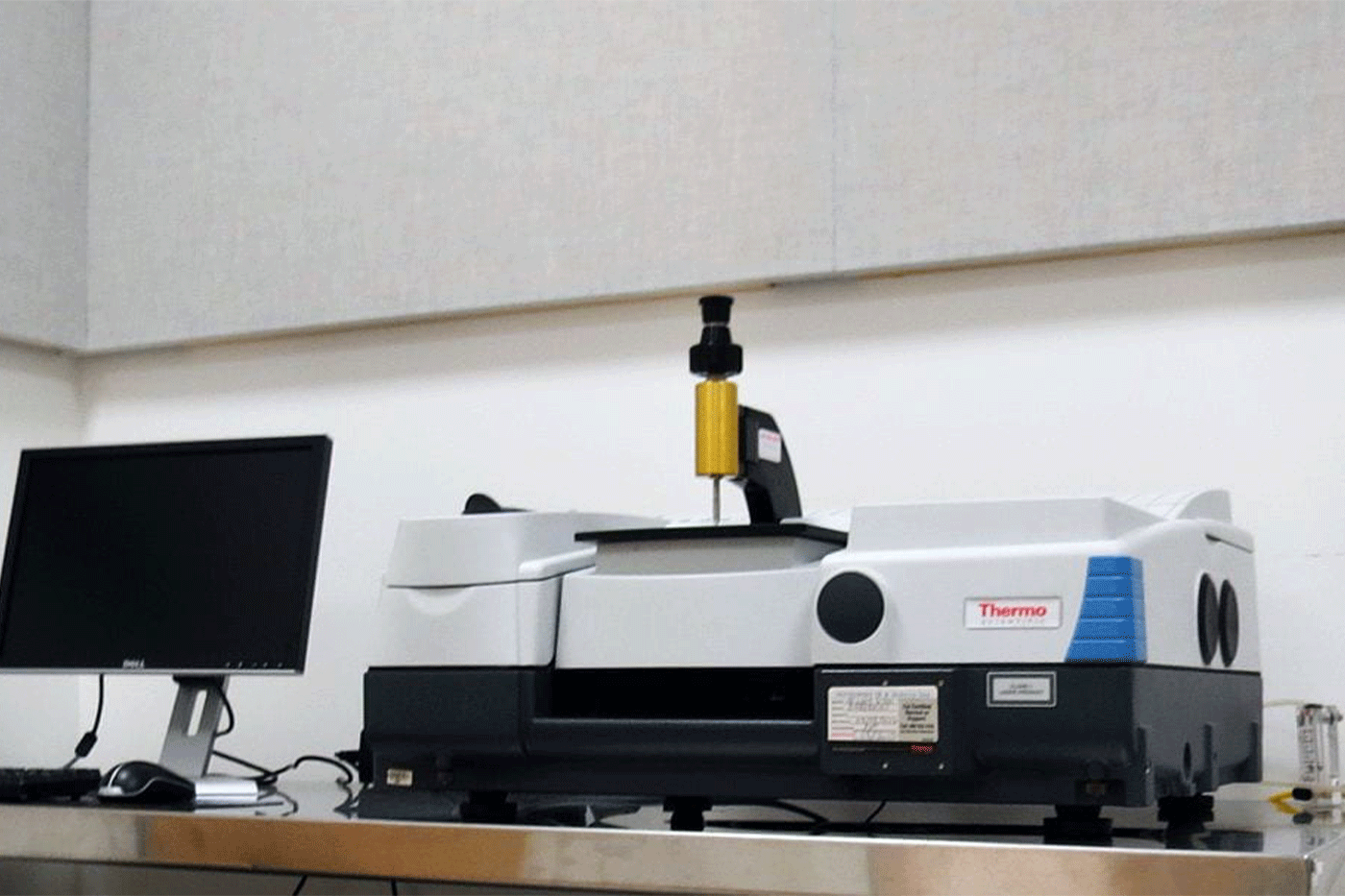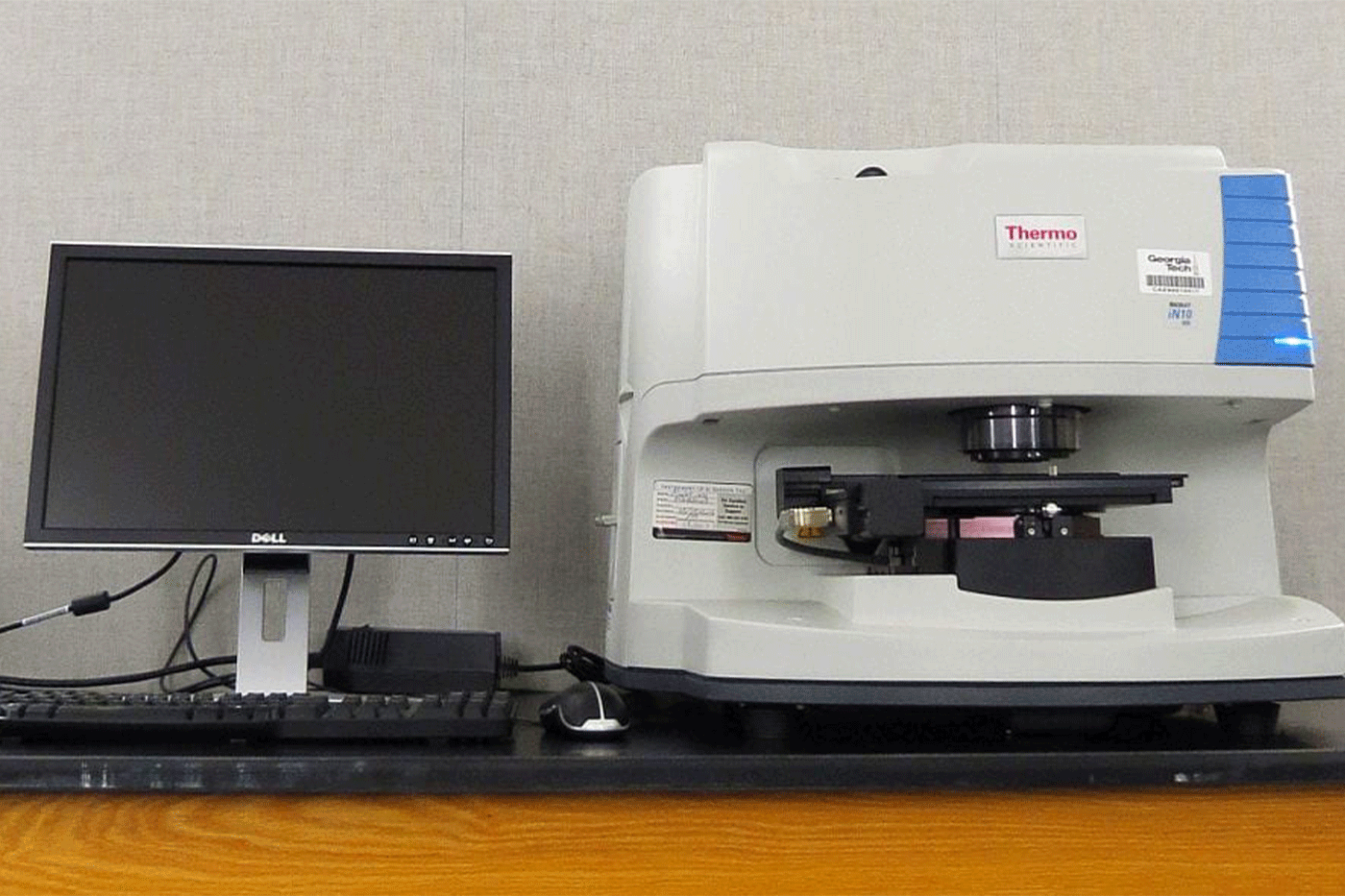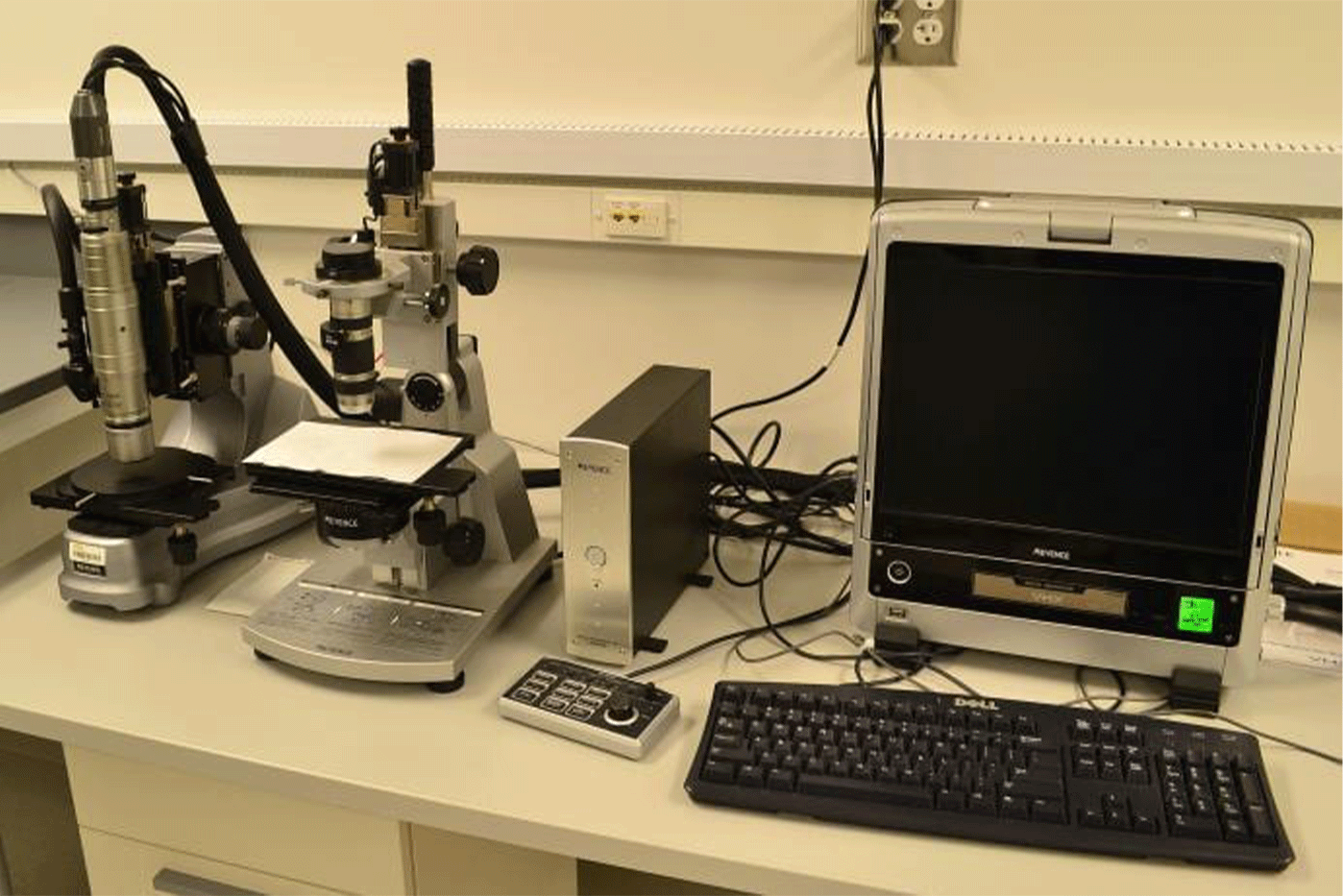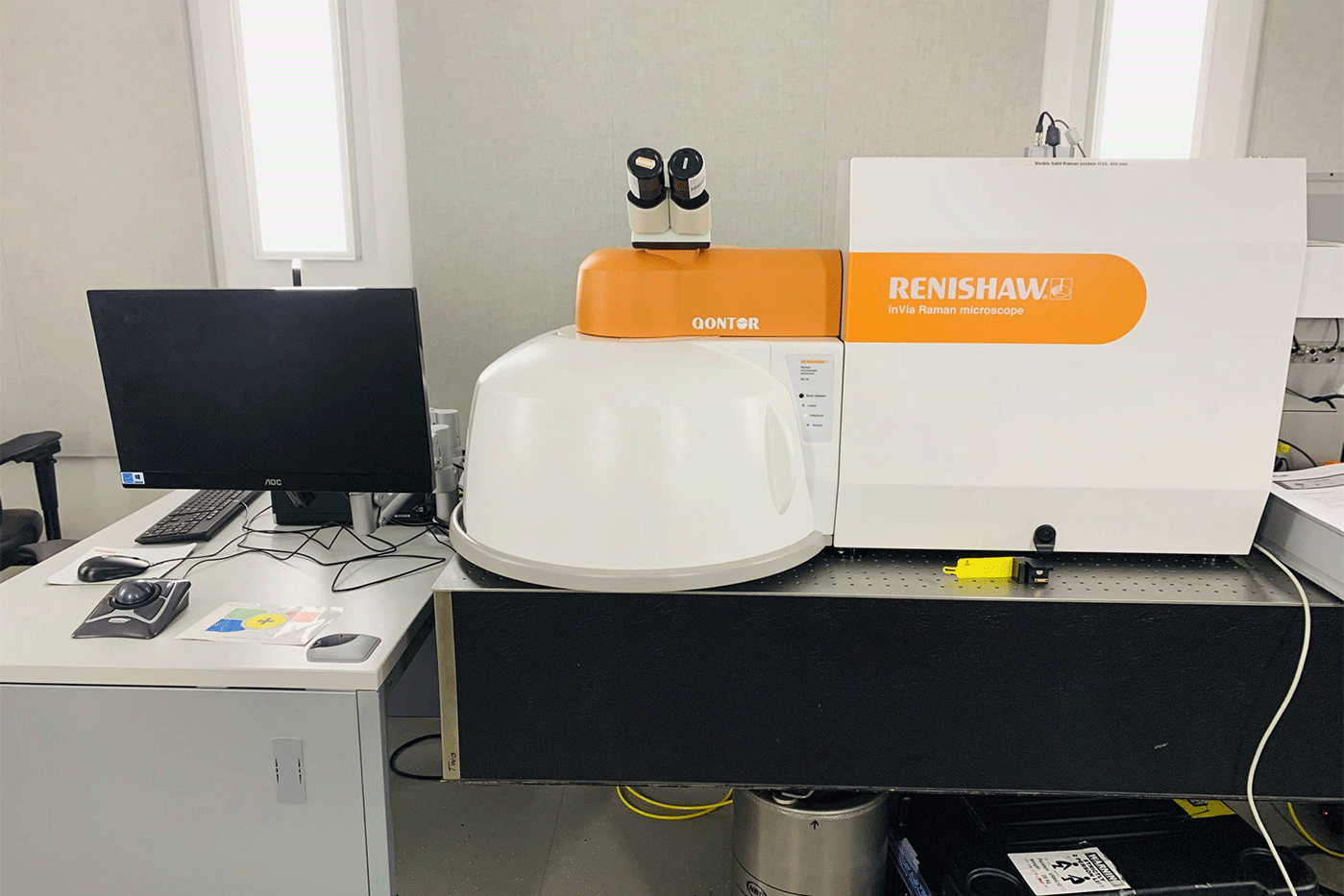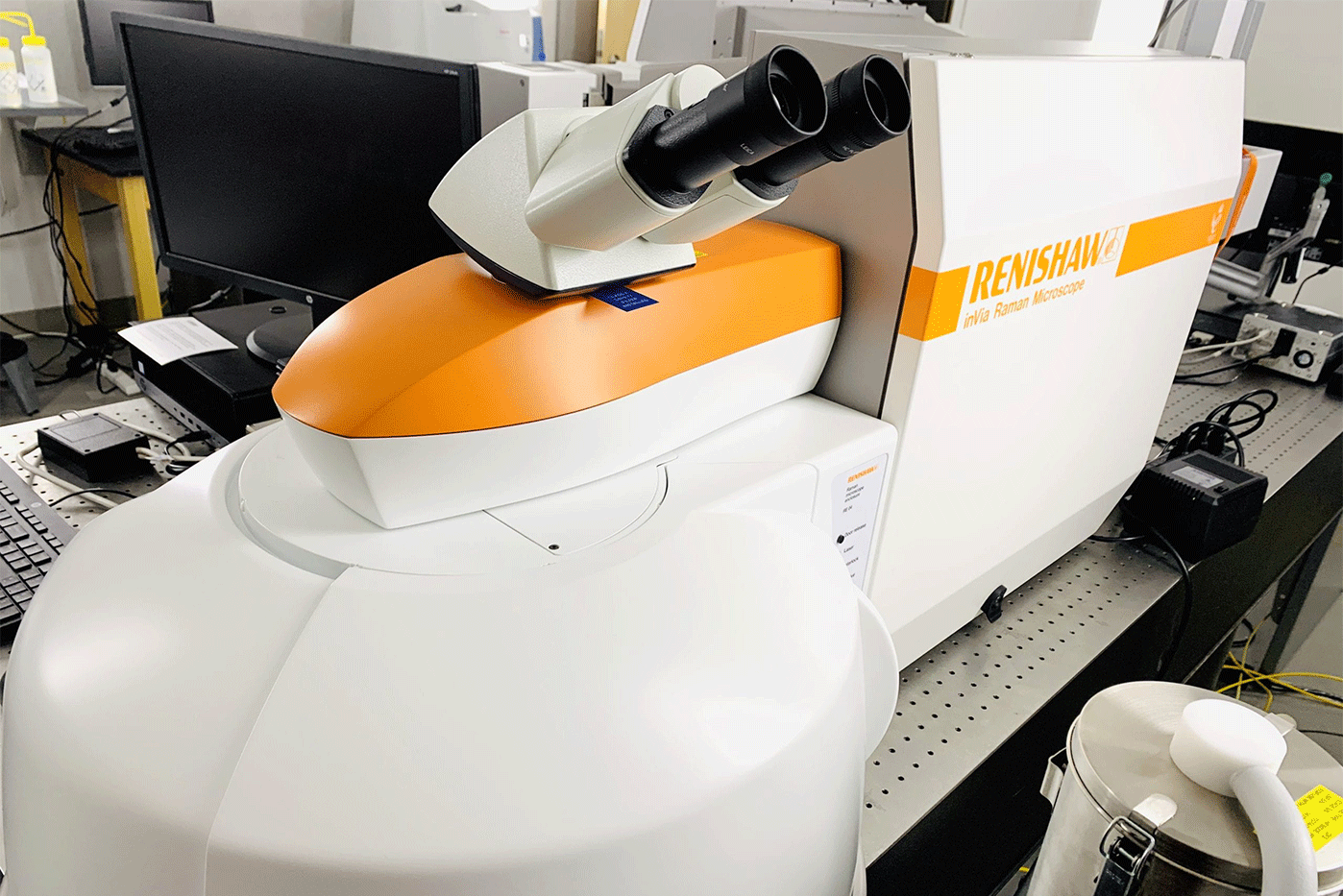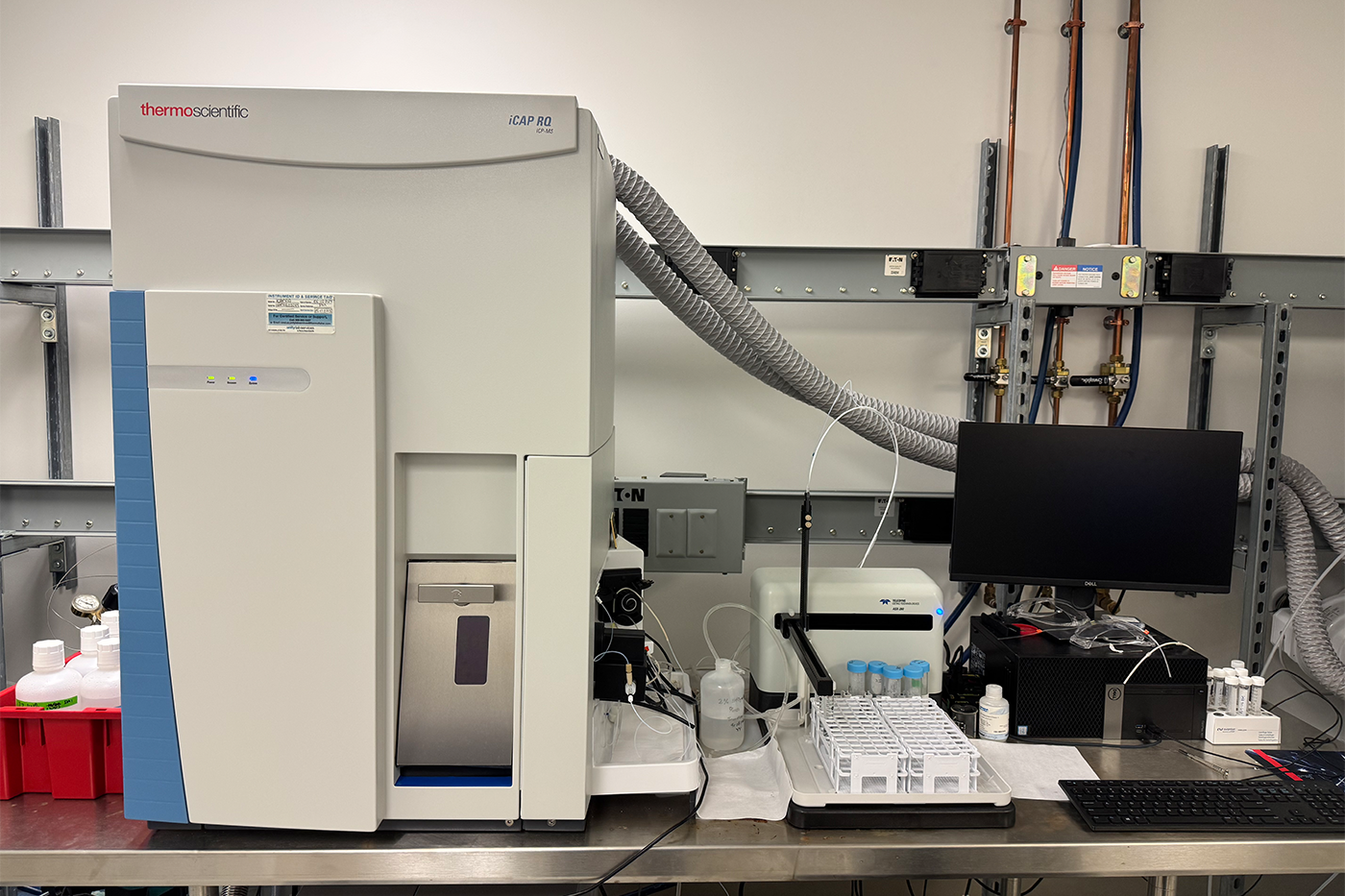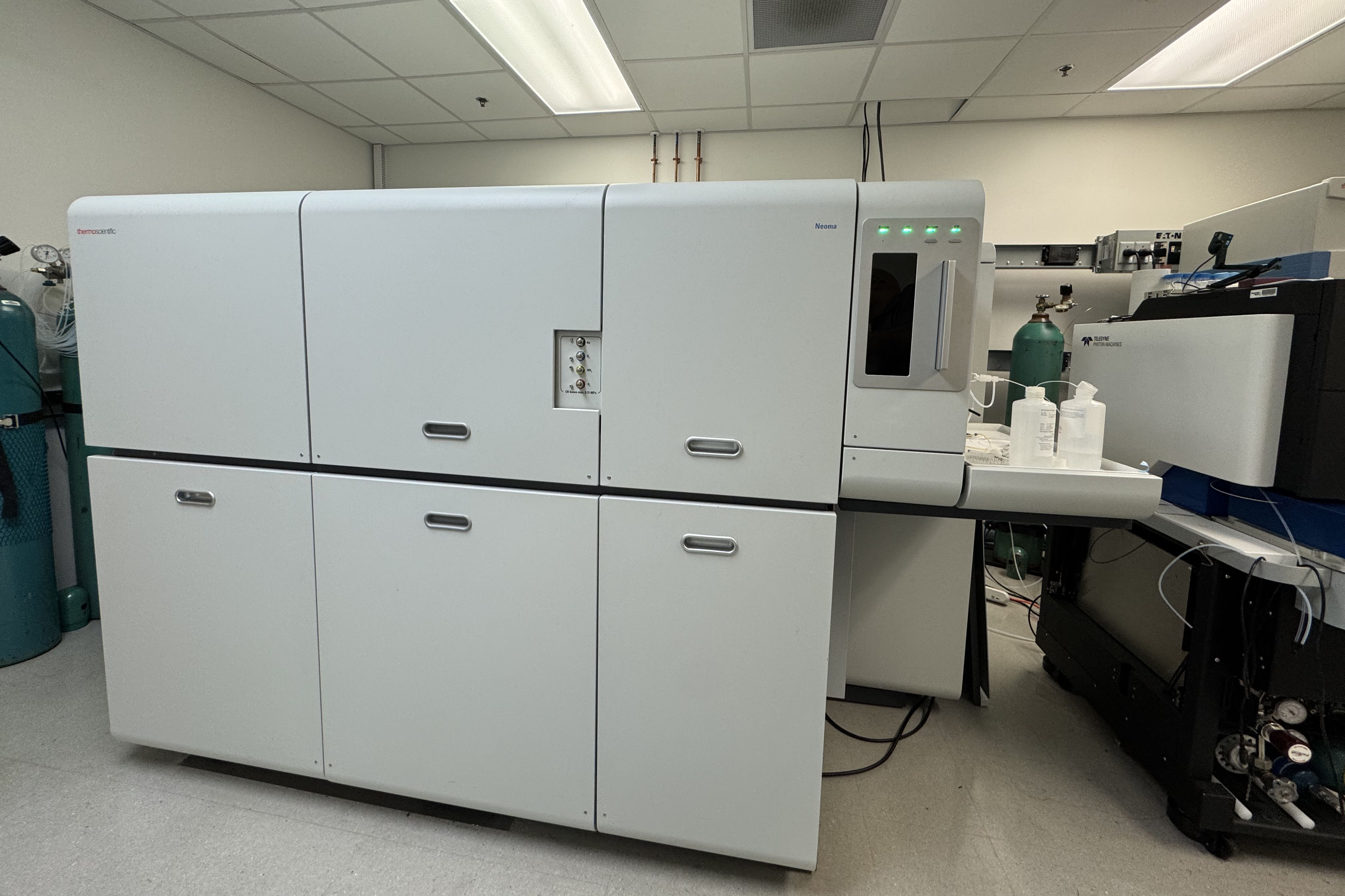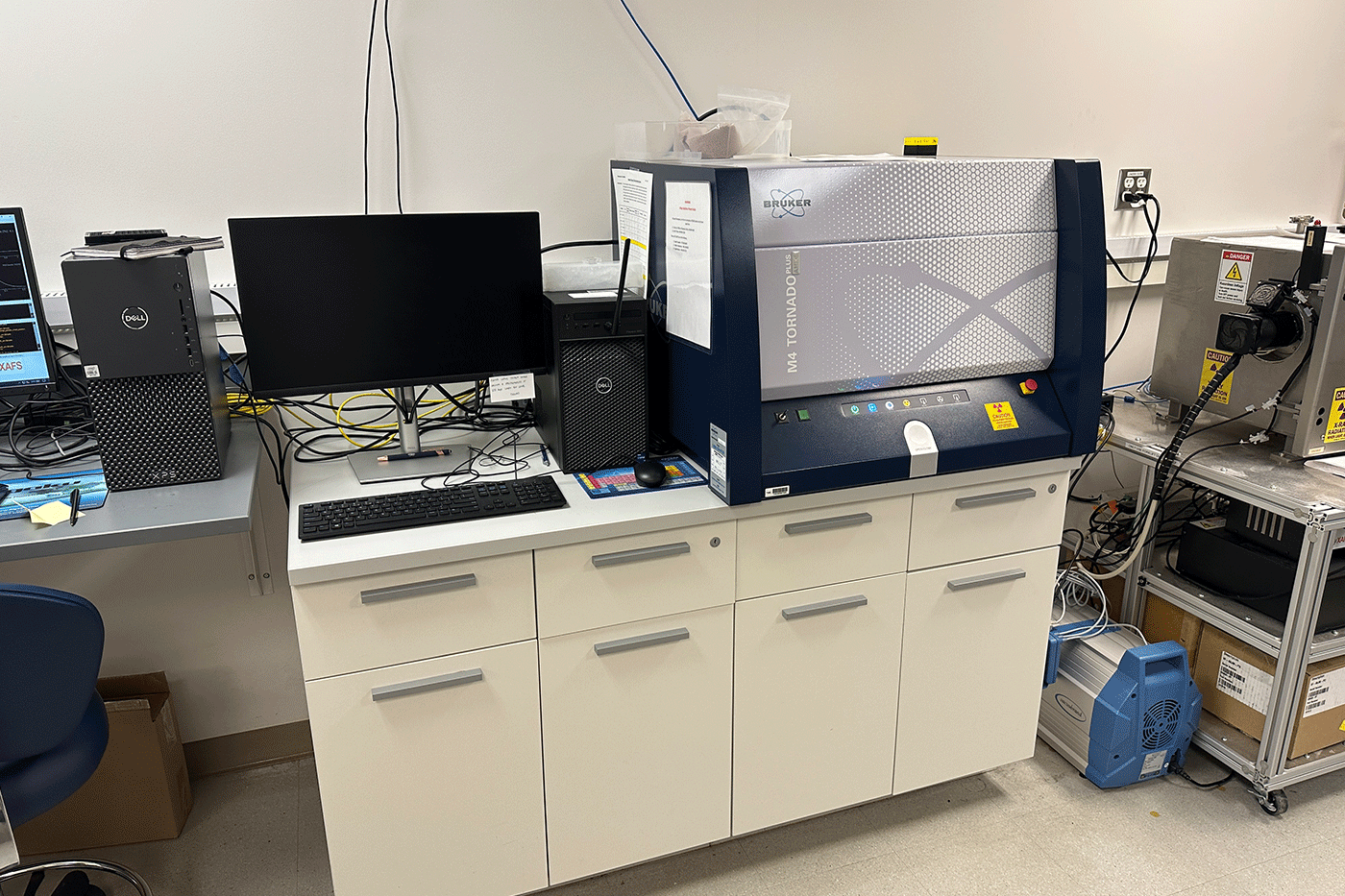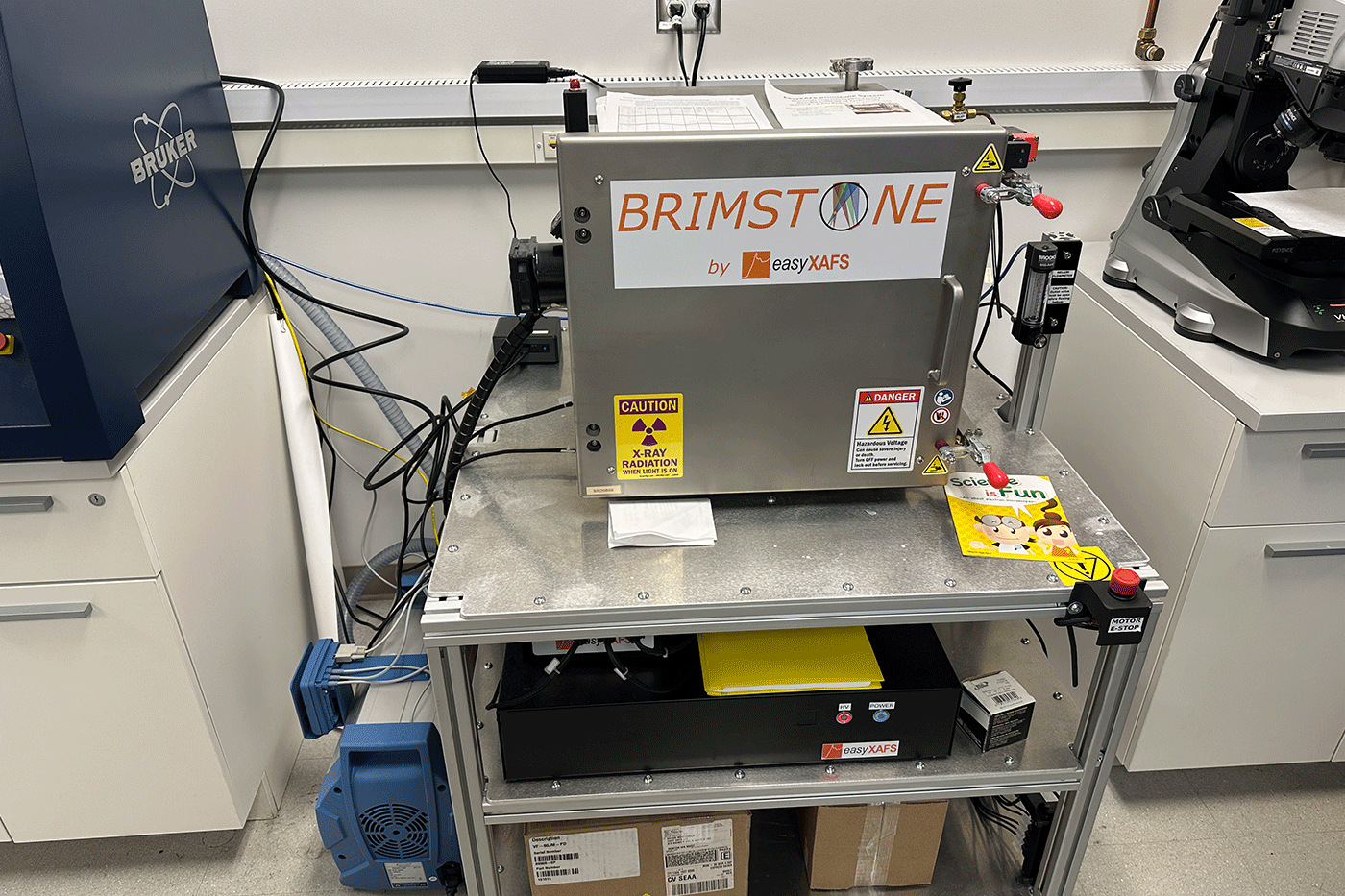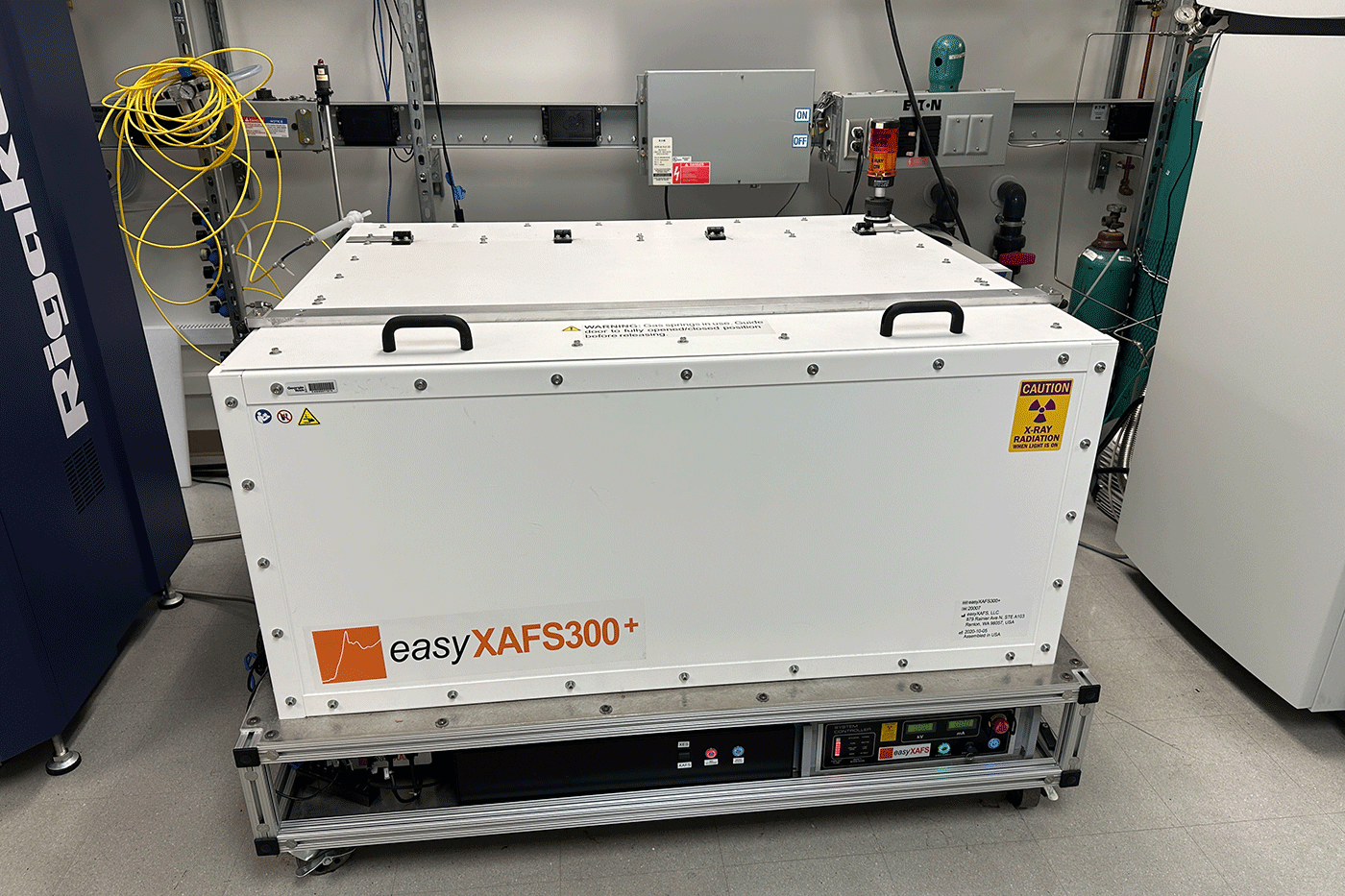We offer two types of spectroscopy techniques: raman spectroscopy and infrared spectroscopy.
Raman Spectroscopy detects light that has been inelastically scattered by an illuminated sample. The spectrum of that light provides a fingerprint by which molecules can be identified and small changes in molecular concentration, structure, or environment can be measured and mapped in 2D or 3D space. Any application where non-destructive, microscopic, chemical analysis and imaging is required. It can be used to image and characterize the chemical composition and structure of most non-metallic samples whether in solid, liquid, gas, powder, or some other form.
Infrared Spectroscopy measures the absorption of Infrared (IR) light as a function of wavelength by the molecules in a sample. The sample can be solid, liquid or gas. The infrared photons induce vibrational excitation of dipoles in polar molecules. The different vibrational modes of the molecules (e.g., bending, stretching, scissoring, rocking and twisting) have characteristic frequencies and combine to give a nearly unique spectral fingerprint for each compound. Because of that specificity, Infrared Spectroscopy is widely used to identify organic compounds and unknown polymers. (e.g., in forensic studies & in reverse engineering of materials).
Nicolet 6700 FTIR Spectrometer
The Thermo Nicolet 6700 Fourier Transform Infrared Spectrometer (FTIR) uses infrared energy to excite the atoms of a material. The spectrum of the light absorbed and transmitted as the atoms vibrate provides a fingerprint of the structure of the molecules in the sample.
iN10MX FTIR Microscope
The Thermo iN10MX Fourier Transform Infrared Microscope (FTIR) uses infrared energy to excite the atoms of a material. The spectrum of the light absorbed and transmitted as the atoms vibrate provides a fingerprint of the structure of the molecules in the sample.
Keyence Digital Microscopes
The MCF has two Keyence digital microscopes: the Keyence VHX-600 and the Keyence VHX-7000 Digital Microscope.
Renishaw Qontor Confocal Raman Microscope
The Renishaw Qontor Raman Microscope uses a laser beam to excite the atoms of a material. Optical dispersion gratings and a sensitive camera permit the system to record the change in wavelength of the emitted spectrum vs the incident beam wavelength.
Mass Spectroscopy
Thermo iCAP ICP-MS
The iCAP RQ is a Mass Spectrometer (MS) with an Inductively Coupled Plasma (ICP) torch to efficiently ionize samples for ultra-high sensitivity measurements of trace elements.
Thermo Neoma ICP-MS
The Neoma is a multi-collector inductively coupled plasma mass spectrometry (ICP-MS) instrument that has been designed to enable scientists working in earth sciences, nuclear safeguards, and biomedical research to conduct reliable, high-precision isotope ratio analysis across a wide range of applications.
X-Ray Spectroscopy
Bruker Tornado XRF
The Bruker Tornado is an X-Ray Fluorescence (XRF) system that uses a beam of-rays to identify - and quantify - the elements in a sample from C to U.
EasyXAFS Brimstone XES
The BRIMSTONE is a powerful, desktop-sized x-ray emission spectrometer. X-ray emission spectroscopy (XES) is essentially the same measurement as x-ray fluorescence (XRF) but with very high energy resolution (<1 eV), which allows access to a wealth of additional information about the systems being measured.
